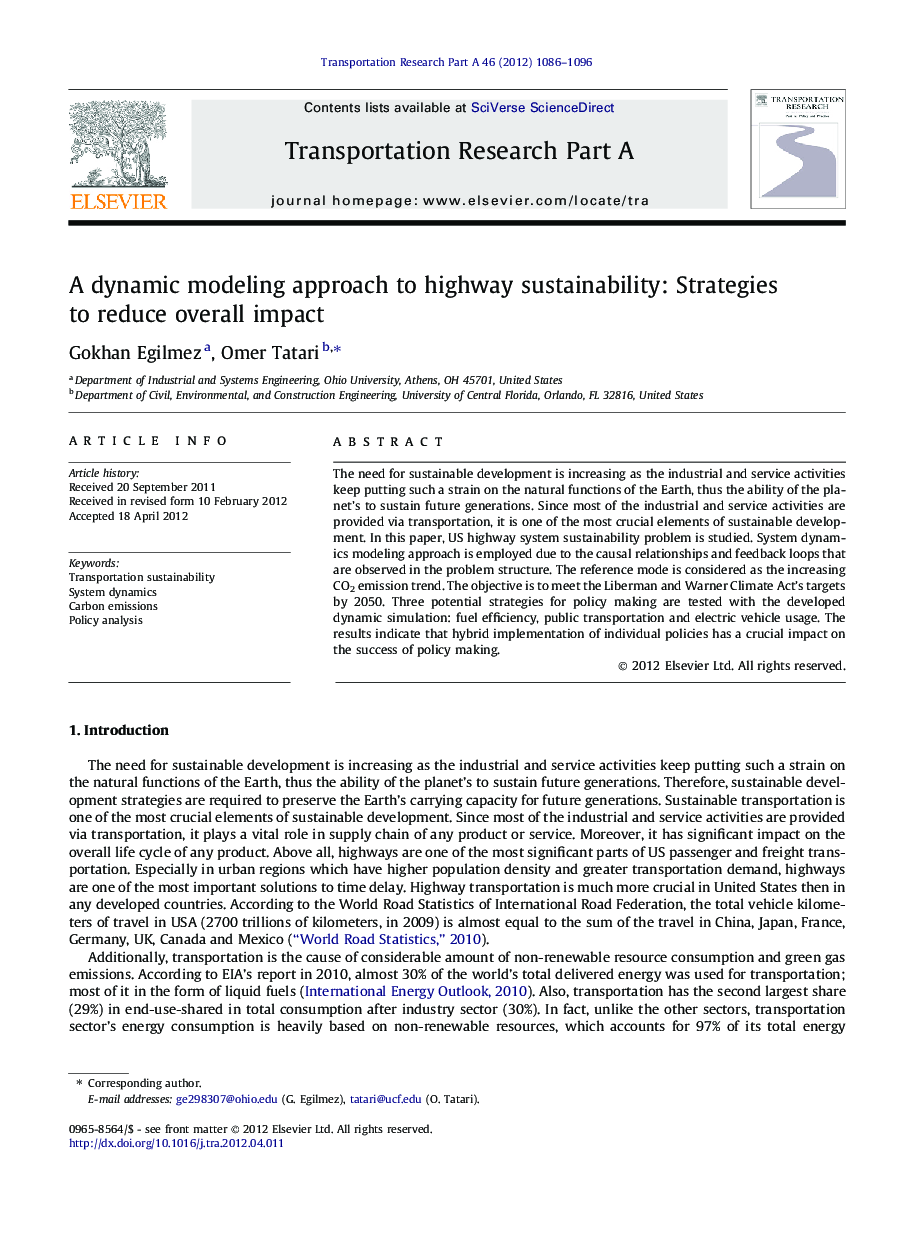| Article ID | Journal | Published Year | Pages | File Type |
|---|---|---|---|---|
| 312089 | Transportation Research Part A: Policy and Practice | 2012 | 11 Pages |
The need for sustainable development is increasing as the industrial and service activities keep putting such a strain on the natural functions of the Earth, thus the ability of the planet’s to sustain future generations. Since most of the industrial and service activities are provided via transportation, it is one of the most crucial elements of sustainable development. In this paper, US highway system sustainability problem is studied. System dynamics modeling approach is employed due to the causal relationships and feedback loops that are observed in the problem structure. The reference mode is considered as the increasing CO2 emission trend. The objective is to meet the Liberman and Warner Climate Act’s targets by 2050. Three potential strategies for policy making are tested with the developed dynamic simulation: fuel efficiency, public transportation and electric vehicle usage. The results indicate that hybrid implementation of individual policies has a crucial impact on the success of policy making.
► System dynamics modeling approach is employed to study the US highway system sustainability problem. ► The objective of the simulation was to meet the Liberman and Warner Climate Act’s targets by 2050. ► Fuel efficiency, public transportation and electric vehicle usage strategies are tested with the developed dynamic simulation. ► The results indicate that hybrid implementation of individual policies has a crucial impact on the success of policy making.
